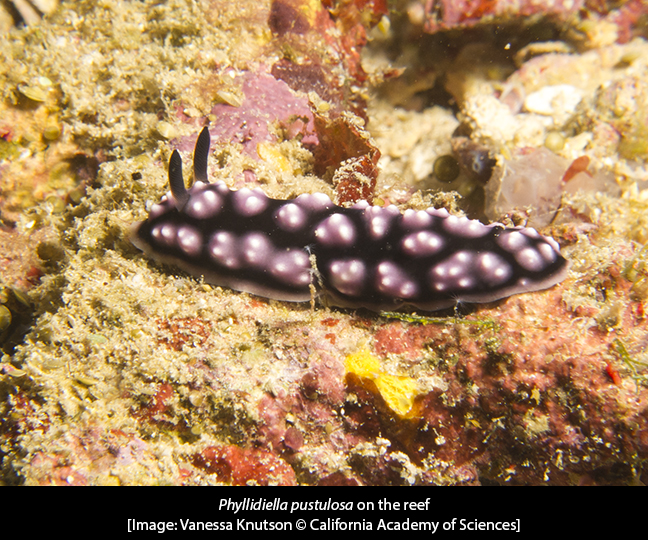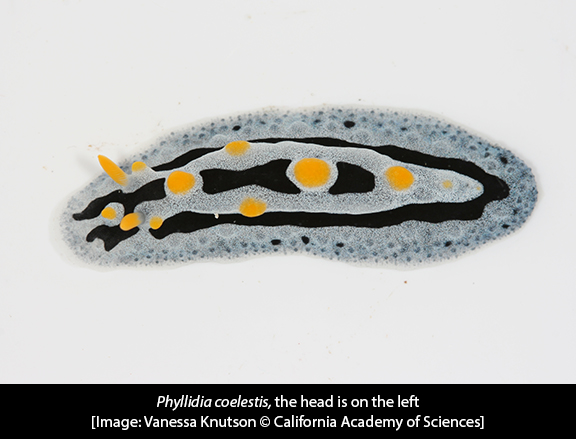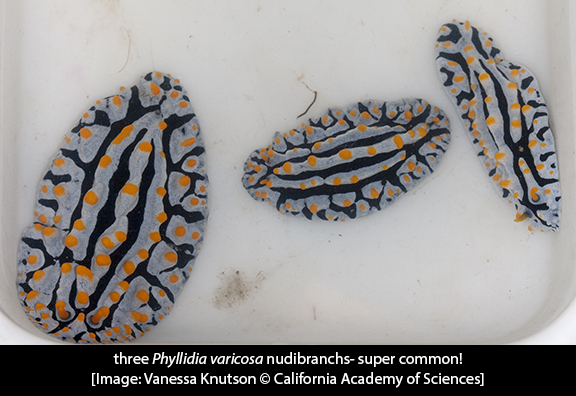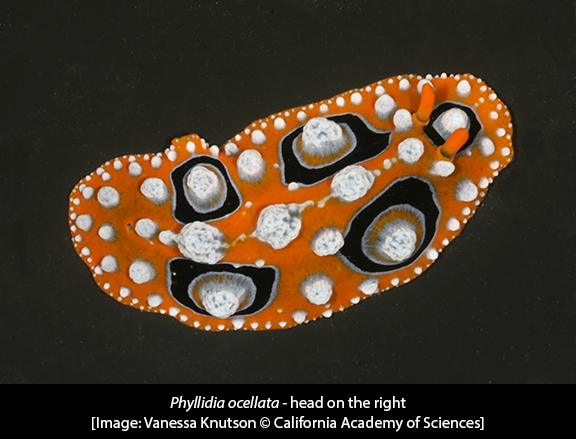From the field…
One of the goals of this expedition is to document all the species of mollusks and other invertebrates that live in the Madang Lagoon. Everyday a group of us “hunter-gatherers” goes out to look for species that we haven’t encountered yet.
When you are looking for animals, you are likely to find several that are pretty common, and you have to work a bit harder to find the other species. There are several species that have been “common as muck” on this expedition. For nudibranchs, the most common we’ve seen are the phyllidiids, which in general are the most common nudibranchs on Pacific coral reefs.

You can see phyllidiids on just about every dive. There are several different species and many are rather difficult to tell apart. They are all rather tough-bodied and because they secrete some nasty toxins, you can’t keep them in a dish with other nudibranchs. If you disturb them, you can actually see them secrete the white, milky toxins. After touching phyllidiids you can even smell the toxins on your fingers. Trust me, it’s not the most pleasant smell…


Note from the photos that phyllidiids do not have a typical gill on their backs like many other dorid nudibranchs. Instead, they have respiratory structures on the sides of their bodies underneath the mantle.

Stay tuned for more notes from the field…
Vanessa Knutson
Project Lab Coordinator
Graduate Student
Invertebrate Zoology and Geology